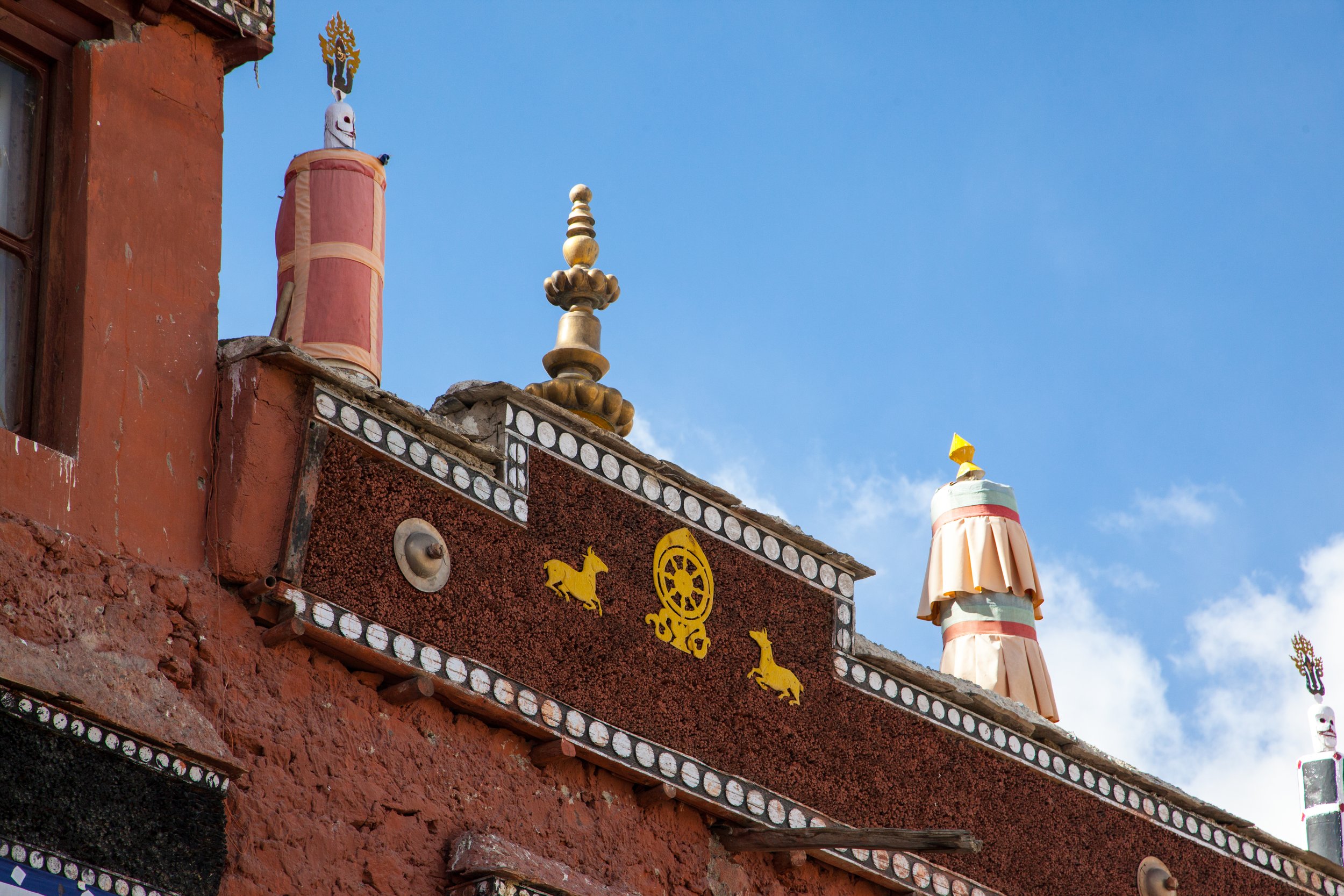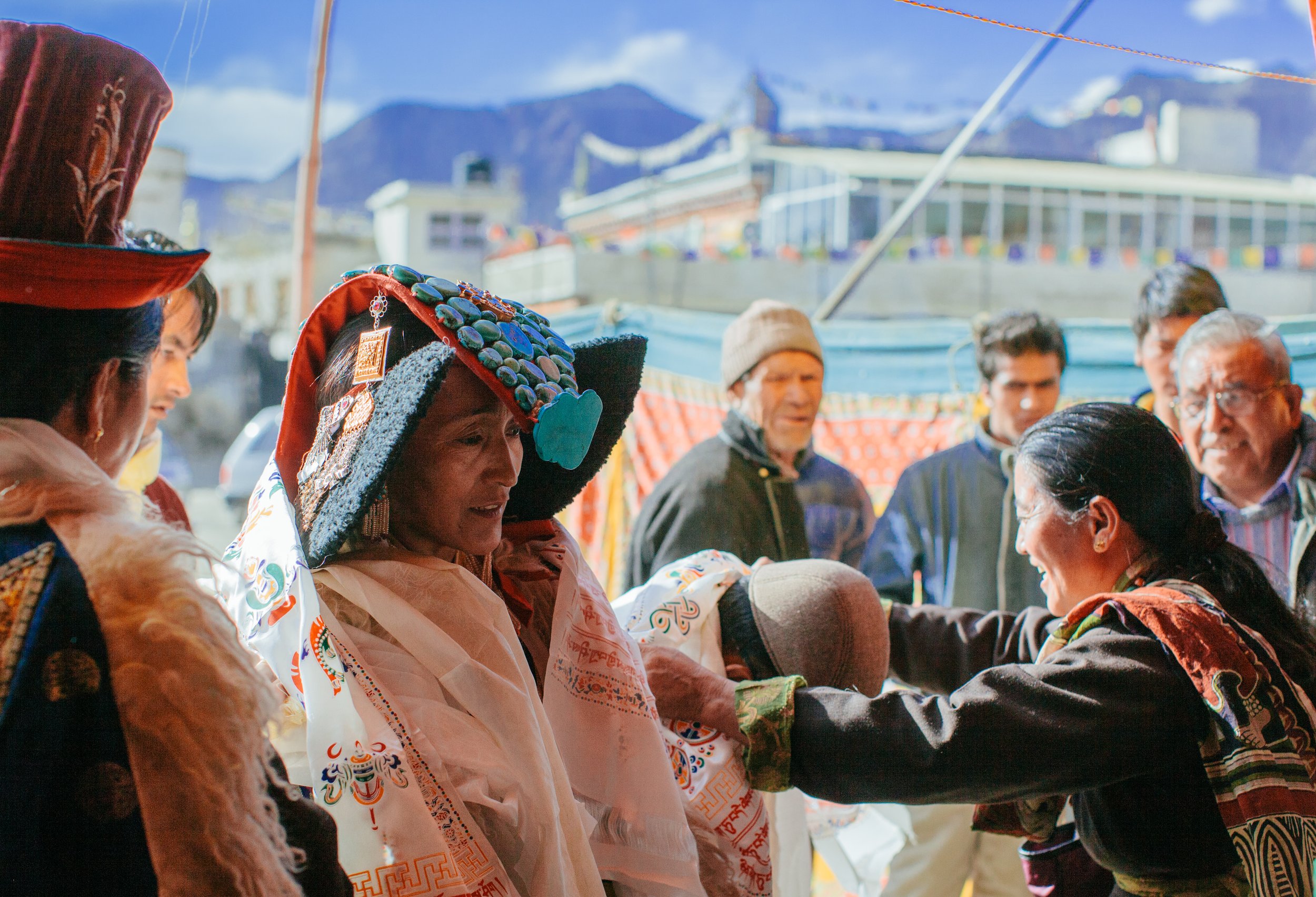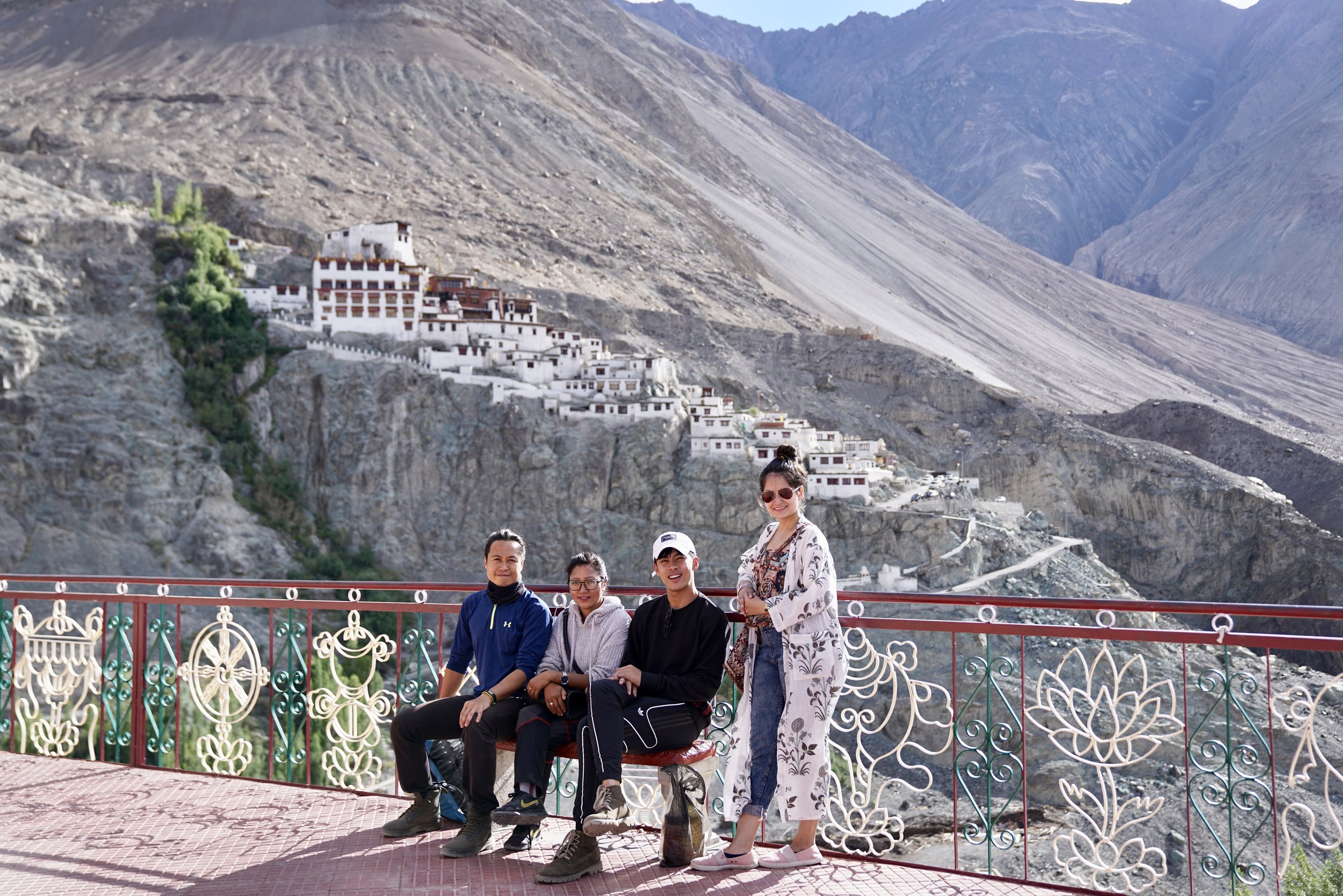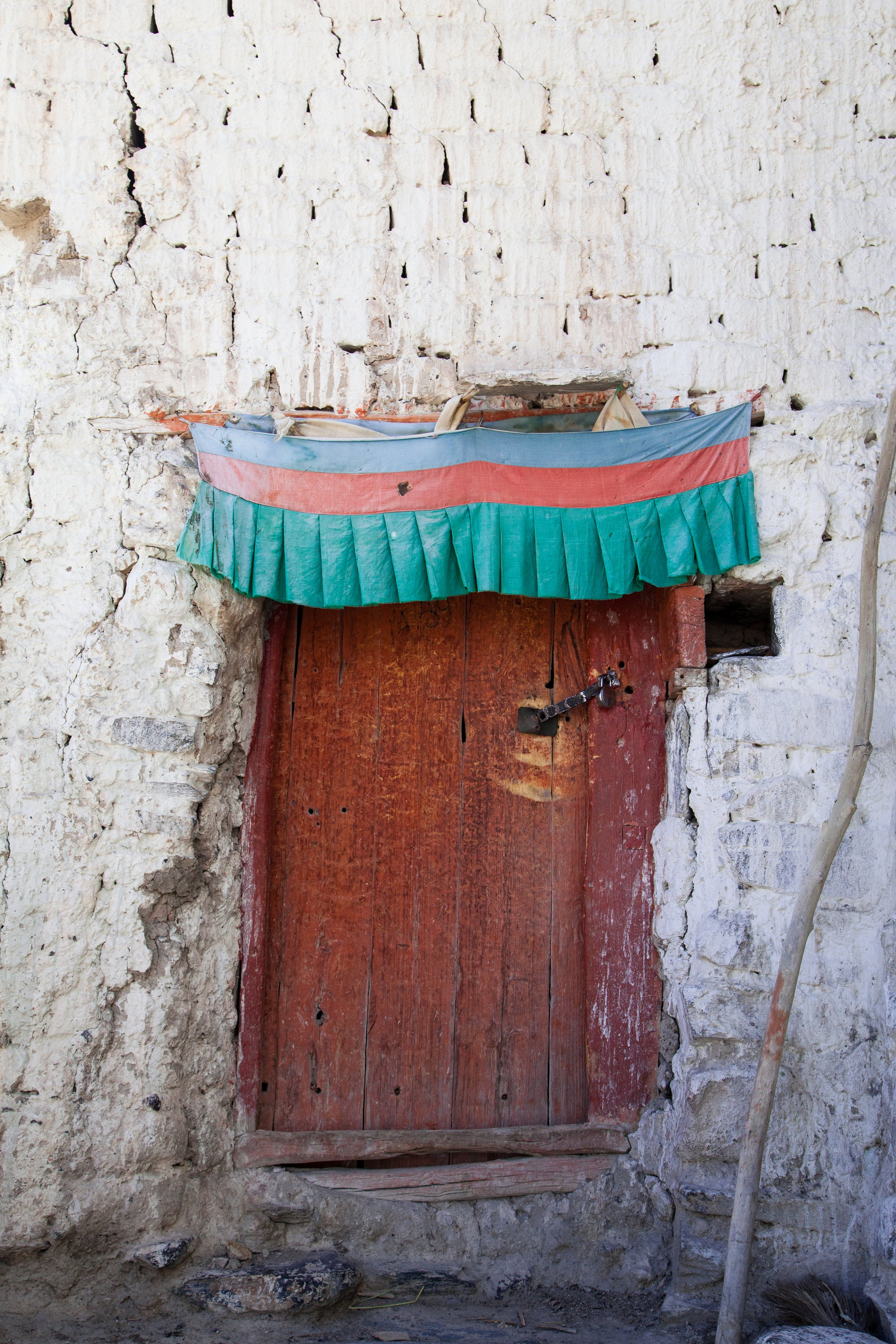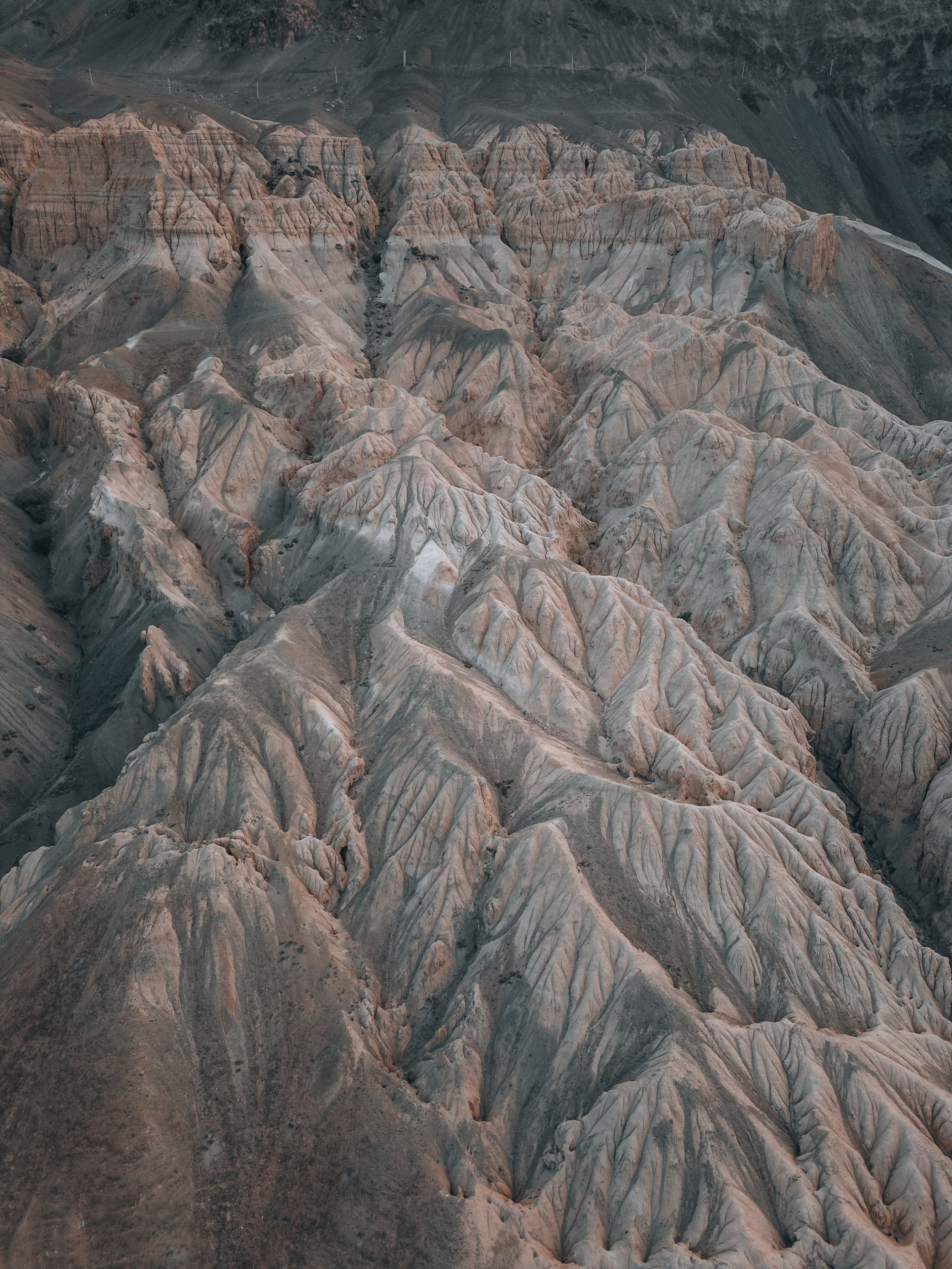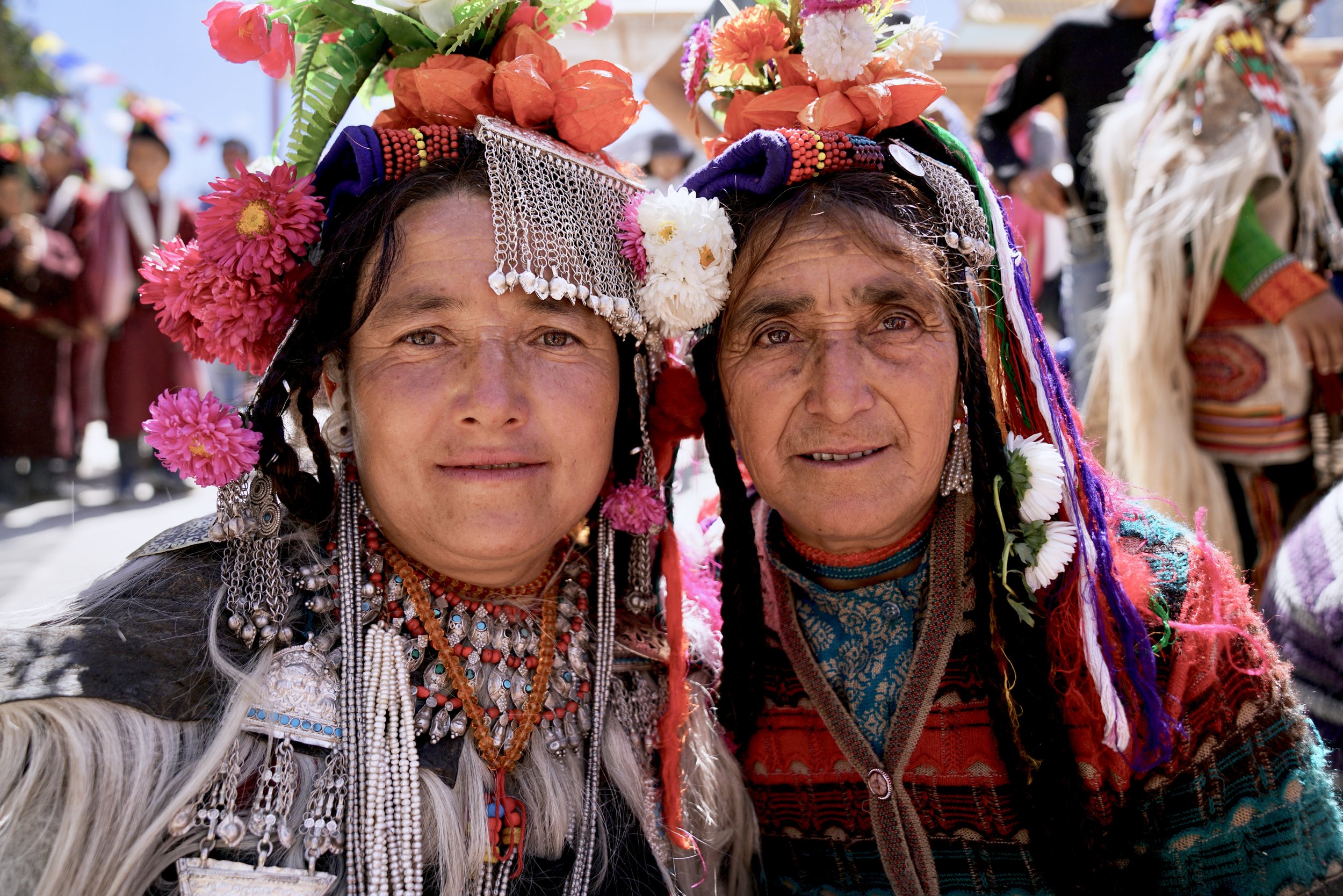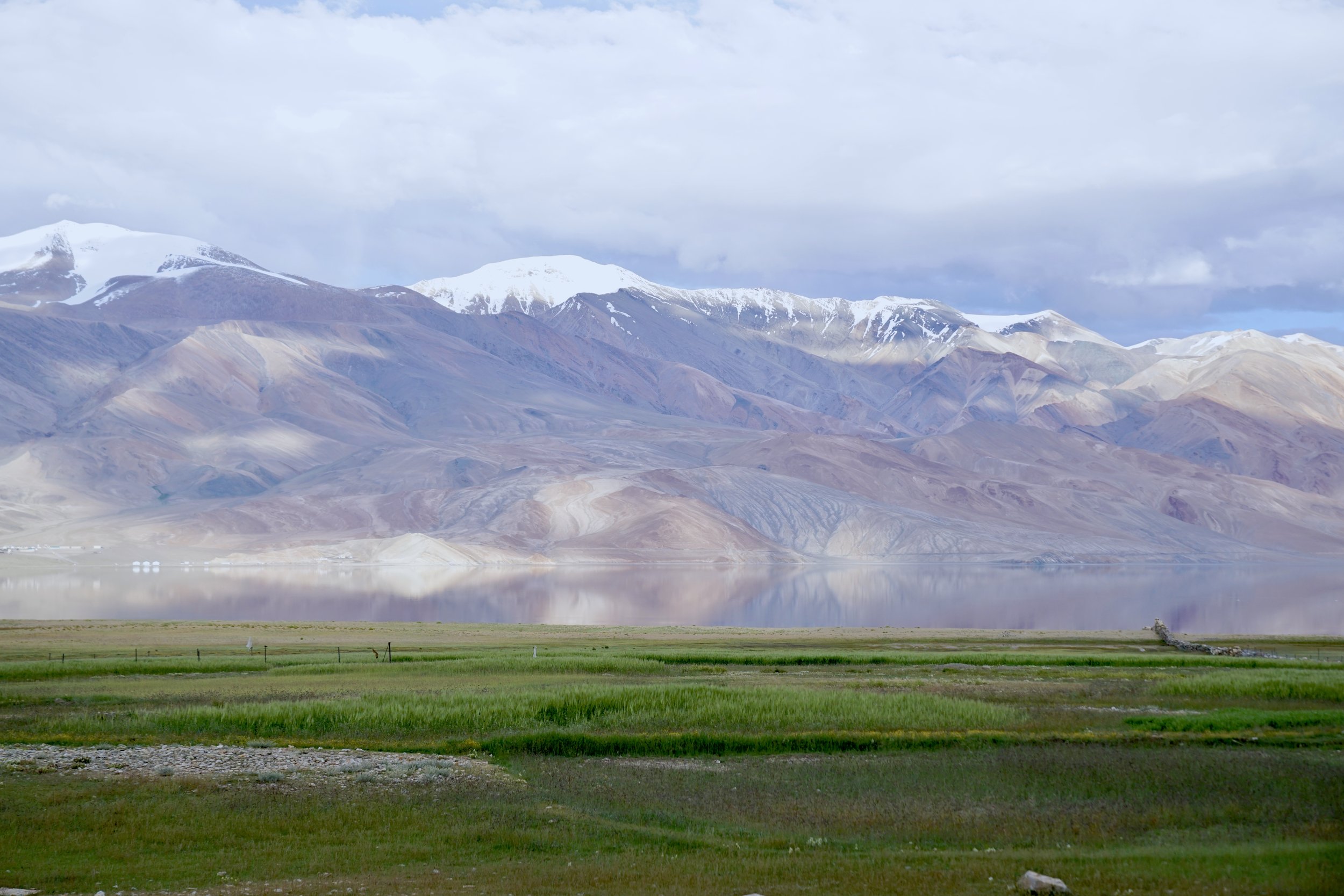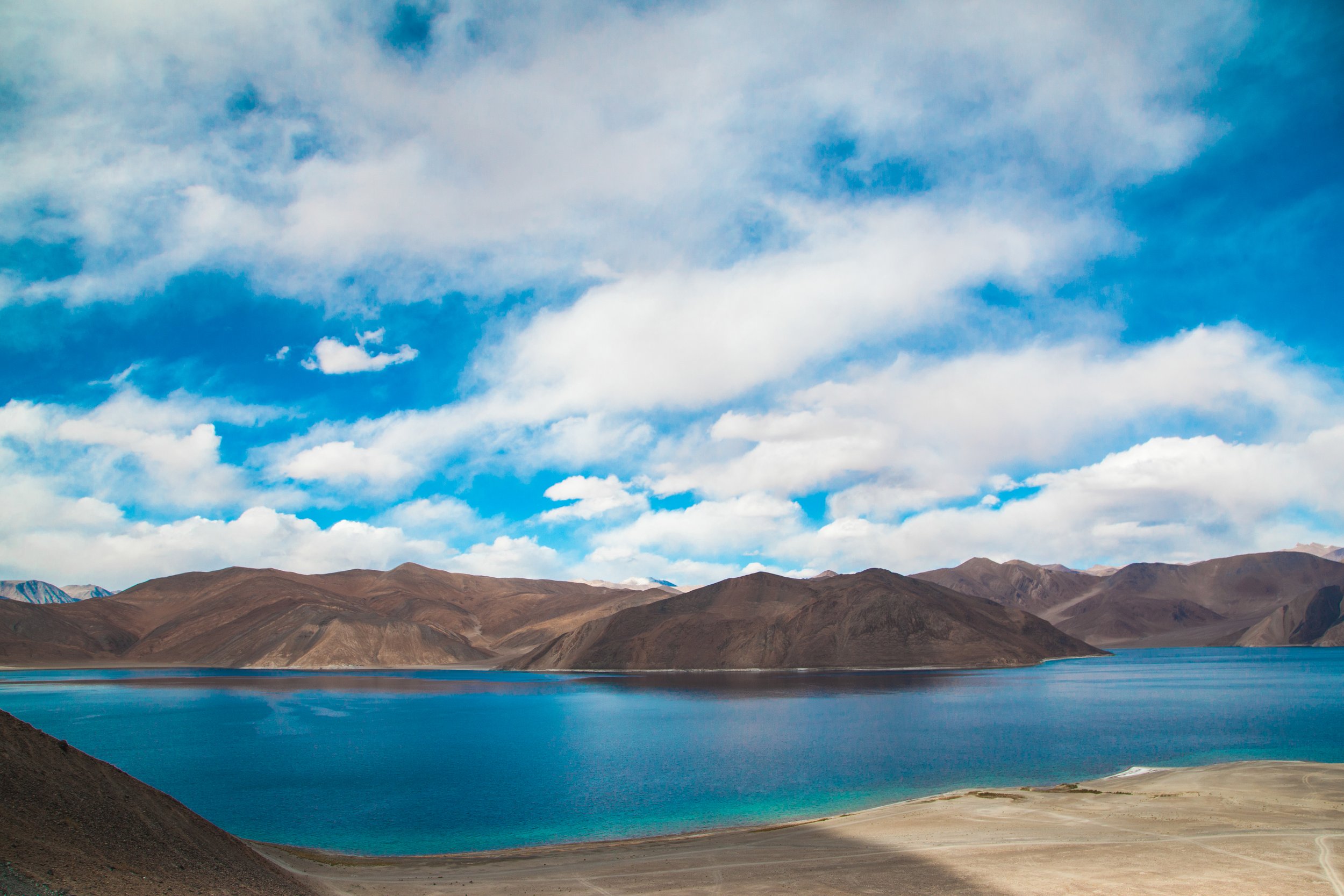
Ladakh
The land of high passes
Time to go beyond what you thought of India, and uncover the captivating wonders of Ladakh, where majestic peaks, ancient monasteries, and untamed landscapes ignite your inner explorer!
Camp beneath the blanket of stars on the edge of the mesmerizing Pangong and Tso Moriri lakes, where tranquility embraces your soul. Dive into the Nubra Valley and witness the awe-inspiring second-longest glacier on the planet, immersing yourself in a world of icy grandeur.
Embark on a breathtaking ride atop Bactrian camels across the Hunder sand dunes, the highest altitude sand dunes in the world, as you embrace the thrill of the wild. Explore the rich cultural tapestry of the Aryan Valley, where the descendants of Alexander the Great reside, offering a unique glimpse into history.
This little slice of heaven, sandwiched between the mighty Himalayan and Karakoram mountain ranges, promises a sense of serenity and awe-inspiring solitude that will resonate deeply within your heart. If you enjoyed the enchantment of Mongolia, prepare to experience the familiar feeling of sublime seclusion in the untamed Ladakhi wilderness.
Step into Ladakh today, and you will embark on a journey that reveals the true meaning of incredible, where breathtaking beauty and remarkable encounters await at every turn. Let Ladakh leave an indelible mark on your soul and ignite the fires of wanderlust within you.
-
VENTURE TO THE ROOF OF THE WORLD: LADAKH, THE LITTLE TIBET
Day 1: Arrival in Leh, Ladakh
Day 2: Leh
Day 3: Timosgam Village
Day 4: Aryan Village
Day 5: Leh
Day 6: Nubra Valley
Day 7: Panggong Tso
Day 8: Leh
Day 9: Depart LehExtension
Day 8: Tso Moriri
Day 9: Leh
Day 10: Depart Leh
Ladakh In A NutshellmountainS, lakeS, MONASTERY
Landscape Type
EPIC LANDSCAPES, TIBETAN AND INDIAN FOOD, CULTURE, ENERGY, VIBES
Most People Love:
LADAKH Trip FAQ
-
Ladakh is generally considered a safe destination with a welcoming local population for travelers. The country has a relatively low crime rate, and violent crime is uncommon. However, like traveling anywhere, it's essential to be aware of your surroundings, take standard safety precautions, and stay informed about local conditions. Petty theft incidents may sporadically transpire in urban areas, vigilance about your surroundings is always advisable.
While Ladakh is generally safe, it's essential to stay informed, exercise common sense, and plan for potential challenges associated with high-altitude travel and remote locations. Checking for the latest travel advisories and seeking local advice can enhance the safety and enjoyment of your trip.
-
For travel to Ladakh, India, it is essential to obtain an Electronic Visa (e-Visa) by visiting the official website.
We will furnish you with all the required information to accompany your application. The processing time for an Indian e-Visa typically spans approximately five business days. The cost for a 30-day e-Tourist Visa is USD 25.00.
Please also ensure that your passport has at least 6 months of validity before embarking on the Ladakh experience to allow a smoother process at immigrations and customs.
-
Travel insurance is your safety net for unexpected stuff like flight hiccups and surprise medical moments. It’s the unsung hero of hassle-free travel. Trust us, a bit of preparation goes a long way. So, buckle up, worry less, and let the adventures roll with the peace of mind that comes with travel insurance!
Unsure of which to go for? Go ahead and explore and compare potential travel insurance providers!
Here is a good one.
This platform offers a comprehensive search feature that allows you to compare various insurance policies specifically tailored for adventure tours. This platform is a good kickoff for information, but just so you know, we’re not the gurus in this area. For the real scoop on coverage, exclusions, and anything special for extreme sports, reach out to the insurance companies directly. They’ve got all the details!
If you're looking for premium coverage, do consider International SOS. International SOS specializes in health and security services, offering medical assistance, travel risk management, and emergency evacuation services.
-
While traveling to Ladakh, India, it's beneficial to maintain a good level of fitness, particularly considering the risk of Altitude Mountain Sickness (AMS). You don't need to be an athlete, but regular exercise prior to your trip can help prepare your body for the altitude. AMS can affect individuals differently, and being physically fit may mitigate its impact. However, it's essential not to overly exert yourself upon arrival. Take precautions, such as staying well-hydrated and avoiding strenuous activities initially, to acclimate to the high altitude gradually. Overall, a moderate level of fitness and mindful measures can enhance your experience and well-being in this breathtaking region.
-
During your stay in Leh, accommodations will be provided in a hotel where you will be sharing a room with one or two other travellers of the same gender. Beyond Leh, your lodgings will vary and may include guesthouses, tourist camps, and homestays with local Ladakhi families, offering you a genuine immersion into the local way of life. These accomodations will either have you sharing with another traveller or the rest of the group in a mixed gender setting.
It's worth noting that the people of Ladakh are known for their warmth and hospitality, ensuring that you will feel welcomed and at ease throughout your journey.
-
In Ladakh, the official currency is the Indian Rupees (Rs). Accessing cash is possible through ATMs and banks in Leh, the capital city. It is essential to ensure that your card, particularly one with Maestro capability, is suitable for successful withdrawals. Otherwise, last minute cash withdrawals are highly recommended to make during your short transit in Indira Gandhi International Airport, Delhi.
We recommend that each individual carries a cash reserve of approximately $100 to $300 or more in U.S. dollars or euros, depending on your intended purchases and considering potential tipping scenarios.
For your reference, the exchange rate is approximately 83.31 Indian Rupees (Rs) for 1 USD. The highest denomination of the Indian Rupees is the 2000 Rupee note.
-
Obtaining a SIM card during your time in Ladakh, India, poses a considerable challenge, extending to even major cities like Delhi. The availability of SIM cards may be limited or impractical, making it essential to rely on Wi-Fi, which is available in only select accommodations. Prioritize communication plans accordingly, as securing a local SIM card might not be a feasible option for the duration of your stay in Ladakh.
-
Ladakh, in northern India, has a high-altitude desert climate due to its location in the rain shadow of the Himalayas. Here's a general overview of the weather in Ladakh for each season:
Spring (March to May): Ladakh transforms as rising temperatures melt winter's snow, revealing mountain slopes, valleys, and high-altitude plains. Blooming wildflowers add vibrant colors to meadows, and melting snow contributes to flowing rivers and streams. Daytime temperatures range from 5°C to 20°C (41°F to 68°F), and nights can still be chilly.
Summer (June to August): Ladakh briefly turns lush with greenery, a stark contrast to its typical high-altitude desert. This season allows access to mountain passes and lakes like Pangong and Tso Moriri. Nomadic communities emerge with their livestock, enriching the landscape with cultural vibrancy. Daytime temperatures can reach 20°C to 30°C (68°F to 86°F) or higher, especially in the lower regions like Leh. Nights are generally cool, with temperatures ranging from 10°C to 15°C (50°F to 59°F).
Autumn (September to October): Autumn is characterized by clear skies and pleasant daytime temperatures ranging from 5°C to 20°C (41°F to 68°F). Nights become colder as winter approaches.
Winter (November to February): Winter in Ladakh is harsh, with extremely cold temperatures, especially in high-altitude areas. Daytime temperatures can range from -10°C to 5°C (14°F to 41°F), and nights can plunge well below freezing, sometimes reaching as low as -20°C to -30°C (-4°F to -22°F).
Ladakh is known for its dramatic temperature variations between day and night, as well as between seasons. The region is also characterized by low humidity and clear skies, making it a popular destination for stargazing. Travelers should be prepared for the high-altitude conditions and temperature extremes, especially during the winter months.
-
Wearing the right gear is essential to ensure you’re fully prepared and comfortable throughout your adventure. The unpredictable weather and diverse terrain demand proper attire, so we highly recommend following our curated packing list. After years of extensive reviews and firsthand experience, we’ve meticulously designed this list to be your ultimate guide for your journey to Ladakh.
Once your adventure is booked, we’ll send over the detailed packing list to help you get ready. If you have any questions, feel free to reach out via email or WhatsApp—we’re here to assist you every step of the way!
-
Certainly, for your upcoming expedition, it is advisable to include supplementary gear and electronic items. These essentials encompass a headlamp, which proves invaluable during your rural sojourn, particularly in accommodations such as ger camps or for nighttime activities. Additionally, consider packing power banks to ensure your electronic devices remain charged throughout your journey. A personal First Aid Kit is also strongly recommended, equipped with fundamental supplies like hand sanitizers, analgesics, anti-diarrheal medication, wound ointment, adhesive bandages, blister care solutions, and motion sickness tablets, should they be required.
For an enhanced level of comfort, contemplate the inclusion of personal comfort items like eye masks, microfiber towels, an inflatable travel pillow, and earplugs. These additions will contribute to a more comfortable and convenient overall experience during your expedition.
Lastly, if you have a penchant for culinary exploration, you may wish to bring along your preferred local snacks, spices, and instant food options to add a flavourful dimension to your mealtime experience.
-
For your convenience, we recommend two specific types of bags on our expedition:
1. Daypack Selection: We suggest opting for a 15-30 litre daypack, complete with a rain cover. This size is both practical for vehicle transport and exploration. Your daypack will be handy for carrying essential items like your passport, wallet, camera, water bottle, spare clothing, snacks, and more. It's advantageous to choose one with a water bladder compartment for easy hydration. Quality daypacks can be found from renowned brands, such as Fjallraven, our preferred outdoor brand.
2. Check-In Bag: For your check-in luggage, we advise either a big backpack or a duffel bag. The weight limit for check-in luggage to Ladakh is 30 kg, so please keep this in mind. Remember to carry all your electronics with you as part of your hand luggage. Additionally, we recommend having a set of clothing, including warm gear like a beanie and gloves, in your hand luggage as a backup, in case your checked-in bag experiences delays or issues beyond our control.
-
When visiting Ladakh, your culinary experience is incomplete without savoring the authentic Ladakhi cuisine. Alongside this local delight, you may have the opportunity to explore Tibetan and Western culinary influences.
At Beyond Expeditions, we are dedicated to accommodating your dietary requirements. Simply inform any member of our team, and we will ensure that you can relish Ladakhi cuisine while adhering to your dietary preferences. Ladakhi cuisine predominantly features vegetarian offerings, with options for Halal, Vegan, and Vegetarian preferences widely available. It's worth noting that while most of the cuisine in Ladakh is vegetarian, it may not be Halal certified.
-
In Ladakh, it's generally advisable for visitors to avoid drinking tap water or any water from untreated sources, as the quality of water can vary, and there is a risk of waterborne diseases. It's recommended to drink bottled or boiled water, or use water purification methods such as water purification tablets or portable water filters. We suggest getting additional bottled water during your visits to supermarkets, as our provision includes only one bottle per day.
Travelers should also exercise caution with ice in drinks, as it may have been made from untreated water. Additionally, be cautious about consuming raw or uncooked food that may have been washed with untreated water. Taking these precautions can help prevent waterborne illnesses and ensure a healthier travel experience in Ladakh.
-
We strongly recommend consulting a medical professional to assess your specific health needs and adhere to Ladakh's health guidelines. Your well-being is our priority, and individualized medical advice ensures a safe and healthy journey.
Typical recommendations include Cholera, Hepatitis A, Hepatitis B, Malaria, Measles, Rabies. Please note that a yellow fever vaccination certificate is required for travellers over 1 year of age arriving from countries with risk of yellow fever transmission and for travellers having transited more than 12 hours through the airport of a country with risk of yellow fever transmission.
-
As Ladakh is located at a mountainous region that is approximately 3000m to 6000m above sea level, the sudden change in altitude from low (in Singapore) to high (in Ladakh) could result in Acute Mountain Sickness (AMS). Although AMS sounds very serious, it's very preventable. Here are some ways you can reduce the risks of AMS:
1. Hydration: Stay hydrated by drinking plenty of fluids, preferably water, to help your body adjust to the altitude.
2. Take it easy: Engage in light activities and avoid strenuous exercise during the first few days at higher altitudes.
3. Avoid alcohol and smoking: Alcohol and smoking can worsen the symptoms of altitude sickness. It is best to avoid them during your stay at high altitudes.
4. Proper nutrition: Eat a well-balanced diet with foods rich in carbohydrates and avoid heavy, greasy meals.
5. Medications: Consult with your healthcare provider about medications such as acetazolamide (Diamox) that may help prevent altitude sickness. It helps the body adjust to higher altitudes by increasing respiration and improving oxygenation; alleviating symptoms such as headache, dizziness, nausea, and fatigue associated with altitude sickness. It is crucial to consult with a healthcare professional before starting Diamox or any other medication, as they can provide personalized advice based on your medical history and specific needs. They will consider the potential benefits and risks to determine if Diamox is suitable for you.
6. Listen to your body: Pay attention to any symptoms of altitude sickness and inform your guide immediately if you experience any discomfort. We can provide appropriate assistance, such as oxygen supplementation or descending to a lower altitude if necessary.
Furthermore, even though we would recommend participants to maintain a steady level of fitness, it is not compulsory as we will not be engaging in many physically intensive activities. Remember, everyone reacts differently to altitude, and it's important to be aware of your body's response. Please consult with your healthcare provider for personalized advice and recommendations regarding altitude sickness prevention.
Participants with medical conditions such as asthma have also participated on this tour, bringing along their inhaler as a precautionary measure. However, as asthma is usually triggered by dust and allergens, which is not usually present in high altitude climates. The first 2 days of the expedition are also catered specially to help participants acclimatise to the higher altitude. There will also be a pre-expedition briefing for all participants few weeks before embarking on the tour, to allow for any doubts to be clarified.
-
Sanitary facilities in Ladakh vary, but in general, you can expect basic amenities. In larger towns like Leh, hotels and guesthouses typically have Western-style toilets and running water, although water shortages can occur. In more remote areas or during treks, basic pit toilets may be the norm. It's advisable to carry personal hygiene items and be prepared for occasional limitations in facilities, maintaining a flexible and eco-conscious approach to sanitation in this unique Himalayan region.
-
Airlines: Round-trip international flights from Singapore to Ladakh are included in your expedition package. While Vistara — a joint venture between Singapore Airlines and Tata Group — was previously one of our preferred airline partners for this route, it is currently no longer available for booking due to internal restructuring within the airline group.
That said, we continue to work closely with trusted airline partners to secure the best available routing based on your travel dates, always prioritising safety, comfort, and seamless connectivity for your journey into the Himalayas.
Transit Information: Since there are no direct flights to the destination from Singapore, a single transit is required to reach the final destination. Expect the transit period to be from 12 to 18 hours. Since we primarily collaborate with international airlines, your luggage is typically transported directly from your departure point to your final destination. However, it's essential to be aware that the specific flight schedule and airport regulations can vary. Unlike certain airports, such as Delhi, India, where rechecking may be necessary for security reasons, most of the time, you won't need to worry about rechecking your baggage during transit.
Handling Your Own Flight Bookings: If you prefer, participants are welcome to manage their own flight bookings. We allocate a flight budget per participant, which will be deducted from the total tour cost. This option allows you to choose your preferred transit country and even arrange layovers according to your preferences. Simply secure your flight schedule and provide us with the details, and we will coordinate planning, including airport transfers, for a seamless experience.
-
Please remember to specify your final destination, rather than your transit stop, when informing the check-in counter staff. Utilize the manual check-in counter during airport check-in, not the automated machine, to guarantee the direct transport of your checked luggage to Leh, Ladakh.
For your return journey from Ladakh, kindly inform airline staff of your final destination, to facilitate a smooth flight process. Ensure you carry your electronics with you and avoid checking them in before your flights.
We aim to streamline your travel experience as much as possible. On our group expeditions, you have the flexibility to either meet at Kushok Bakula Rimpoche International Airport upon arrival or coordinate offline with fellow travelers to check in together. Choose the option that best suits your preferences.
Lastly, upon your arrival at Kushok Bakula Rimpoche International Airport, after retrieving your baggage, our dedicated Ladakhi guide(s) is there to warmly welcome you at the immigration exit, identifiable by the Beyond Expeditions logo in a photo they will be holding. Also, they are already included in the WhatsApp group chat with you, so in the event you inadvertently miss them as you exit immigration, simply send a message in the group to alert them of your presence.
-
Our adventure begins at Kushok Bakula Rimpoche International Airport (IXL), situated just a short 4 kilometers (2.4 miles) from the serene city of Leh, Ladakh.
In Leh, expect to witness majestic views with little to no high-rise buildings and crisp air so sharp it could cut through anything.
-
Absolutely! We love having a global squad on board. Whether you're from the heart of New York City or the serene landscapes of New Zealand, our expeditions are open to adventurers of every nationality.
Just give us a heads-up on where you'll be flying in from, and we'll make sure you're all set for the journey. We take pride in assembling a vibrant crew with diverse nationalities, backgrounds, and stories to share. Join the fun!
-
For local emergency contacts in Ladakh, India, please keep these important numbers in mind:
100 for the Police Control Room
101 for Fire Service
102 for the Medical Helpline
1091 Women Helpline
We also highly advise you to register with the Ministry of Foreign Affairs (SG) to ensure that you can be promptly notified and located in the event of a serious emergency. You can reach the Ministry of Foreign Affairs at (65) 6379 8000 or via email at mfa@mfa.gov.sg for further assistance and support.
-
Should an emergency arise, kindly inform our local expedition guide promptly. Subsequently, you can contact Scott, from our BE team, directly at +65 91150782. Scott will respond to your inquiry as soon as possible.
LADAKH customs
and cultural etiquette
As avid travelers, we humbly recognize ourselves as guests in every country we step into, and we deeply value treating each place with utmost respect and honoring its unique way of life.
To ensure a meaningful and harmonious experience while traveling in Ladakh, here are some invaluable customs and etiquette tips to keep in mind;
-
You can use ‘Julley’ when greeting another in Ladakh. ‘Julley’ is a powerful phrase here because it can mean ‘Hello’, ‘Goodbye’, ‘Thank You’, ‘Please’ and anything else that is good under the sun!
Saying ‘Julley’ with a smile would be the best way to go.
-
Ladakhi, Hindi and Tibetan are commonly spoken languages in the region.
-
Be conscious of the environment and do your part to minimise your impact. Don't litter, and follow responsible eco-friendly practices, such as conserving water and electricity.
-
While traveling in Ladakh, it is important to maintain proper decorum by refraining from extending your legs in the direction of another person, and particularly avoiding such a posture in the vicinity of a Buddha statue.
-
Buddhism is the dominant religion in Ladakh. When visiting monasteries or stupas, walk clockwise around them, and do not touch sacred objects or religious texts without permission.
If you encounter a prayer flag or a wall with inscribed mantras, walk around them clockwise as a sign of respect.
-
When traveling in Ladakh, it is advisable to refrain from wearing attire such as shorts and shirts that do not provide shoulder and knee coverage for both men and women, especially when visiting monasteries and religious sites. Avoid wearing revealing or tight-fitting clothing to respect local customs.
-
The Ladakhi people traditionally sit on the floor in a crossed-leg position, which means that their tables are typically lower than what you might be accustomed to.
It's considered impolite to sit or walk on tables in this region, so we kindly request that you refrain from such actions. If you have any joint or knee issues, please feel free to request an alternative seating arrangement that suits your comfort.
Furthermore, when navigating through a group of people to reach your seat, it is advisable not to cross over outstretched legs. In Ladakh, walking behind individuals is the more respectful and considerate approach. Your adherence to these cultural norms is greatly appreciated.
-
While in Ladakh, it is advisable to reserve physical displays of affection for private moments. Public displays of affection, such as kissing, are considered culturally inappropriate in this region.
-
While traveling in Ladakh, it is important to exercise care and respect by refraining from walking over books, especially those of a religious nature.
-
While in Ladakh, kindly utilize the provided serving cutlery to transfer food onto your plate. Please abstain from employing your personal cutlery to handle others' food.
Additionally, when sampling dishes, accept the spoon offered and place it on your palm before tasting. It is advised not to consume food directly from the cooking spoon.
-
While in Ladakh, it is imperative to consistently seek permission before capturing any photographs.
-
Regarding gratuities for our Ladakhi team, the decision is entirely up to you, and we want you to feel comfortable with your choice. If you wish to tip generously on your own initiative, please feel free to do so—your generosity is highly valued and a meaningful way to acknowledge their hard work. Your group's decision should not restrict you from tipping privately if you desire.
In Ladakh, it is customary to tip local guides and drivers, with an appropriate amount typically ranging from ₹500 to ₹1000 per person per day (approximately $6 to $12). We suggest considering tipping drivers as generously as guides, as they often exert just as much effort to ensure your safety and enjoyment given Ladakh's challenging terrain and high altitudes.
Conversely, if you choose not to tip, that is perfectly acceptable as well. There is no obligation to tip just because others in your group may choose to do so. Your decision is respected, and you have the freedom to decide what aligns with your personal preferences.
Our goal is to make this experience enjoyable and stress-free, allowing you to make tipping decisions based on your own sentiments and choices. Your thoughtfulness and consideration are what truly matter.
When traveling to Ladakh, it's advisable to have local currency on hand. Therefore, we recommend exchanging your currency for Indian Rupees (INR) before your trip or upon arrival at the destination.

